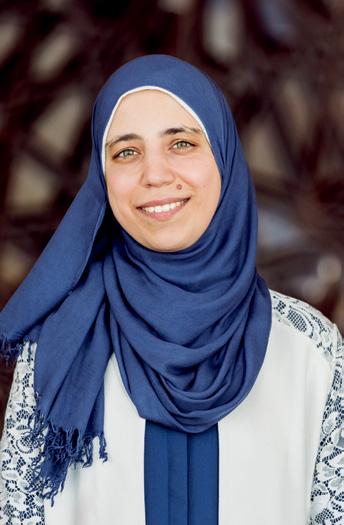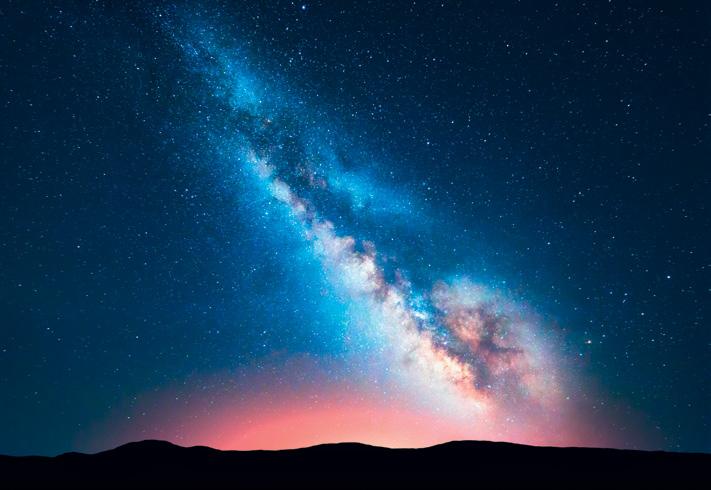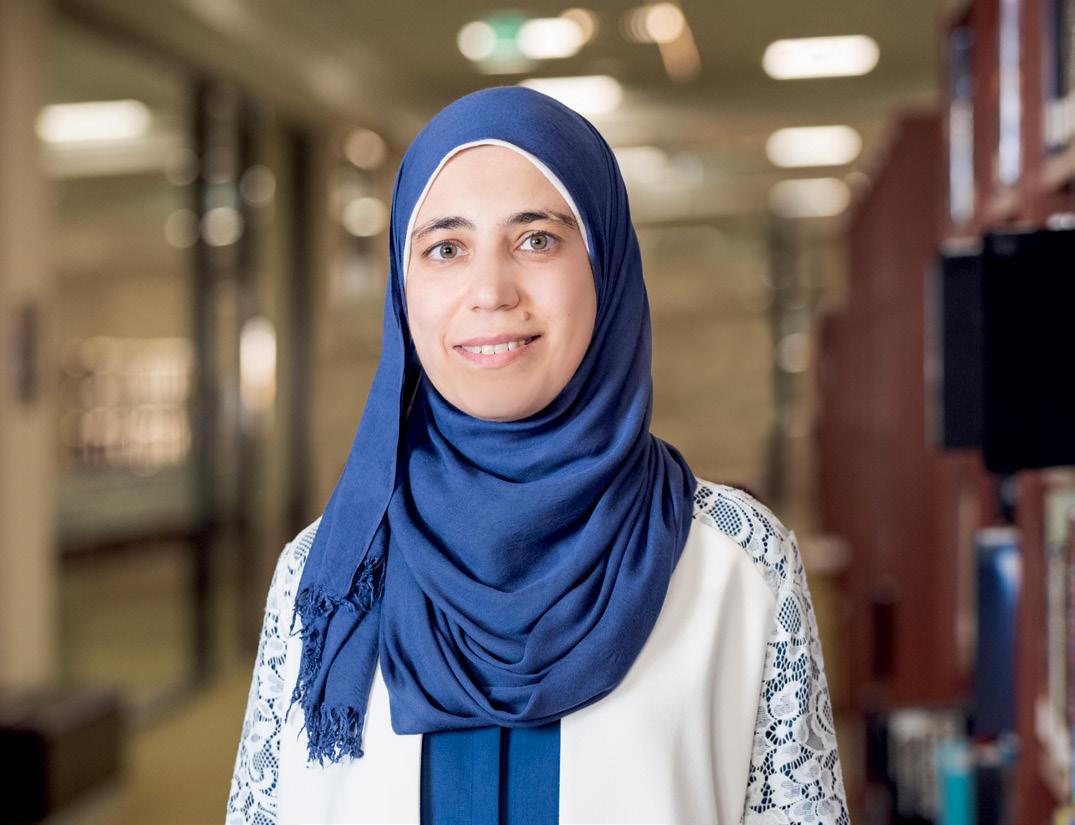
5 minute read
REVEALING THE CHEMICAL CENTER OF THE MILKY WAY
Further understanding about the age and chemical composition of star clusters is crucial to understanding how the Milky Way and other galaxies evolved.
Much of the origin and evolution of the Milky Way and other galaxies is still being studied and tested. Clusters of stars within galaxies are particularly valuable sources of data, as they can provide information both about the chemical evolution of their host galaxy and the evolution of their individual stars. That is why star clusters lie at the heart of modern astrophysics.
Advertisement
“One of the fundamental goals of astrophysics is to understand the star formation and chemical enrichment history of galaxies. Theoretical predictions on the formation and enrichment history of galaxies need to be confirmed by observational data of stars. However, individual distant small stars cannot be observed even with the largest existing telescopes. As an alternative, scientists rely on the light received from the brightest stars, which can be studied using large telescopes,” explained Dr. Randa Asa’d, an assistant professor in the Department of Physics at the American University of Sharjah (AUS).
Dr. Asa’d collaborated with international astronomers to reveal the age and chemical composition of the VDBH 222 star cluster, located in the inner part of the Milky Way, more than 26,000 lightyears from Earth. Given that a light-year is the distance traveled by light in one year, this means that the light observed from VDBH 222 today was emitted more than 26,000 years ago.
“Knowing the age and chemical composition of star clusters allows researchers to study the chemical enrichment of galaxies, which is crucial to understanding how our galaxy and others evolved. We know that the center of the Milky Way experienced a recent star formation activity, producing numerous young star clusters dominated by red supergiant stars. We can determine the origin of this star formation activity by analyzing the chemical composition of these young massive cluster groupings, like the VDBH 222,” she added.
VDBH 222 is a young massive cluster (YMC) of stars that was first discovered in 1975. Recent space surveys have uncovered new YMCs in the Milky Way that are ideal candidates for further exploration because they could shed light on the more recent star formation events that have taken place in our inner galaxy. However, the interstellar dust between Earth and the center of the Milky Way has made it difficult to observe and study these distant star clusters using optical light.
Within VDBH 222, there are six confirmed red supergiants (RSGs), which are a class of star that is cooler in temperature and more luminous than the average star. RSGs are among the largest stars in the universe, several hundred to over a thousand times the radius of the Sun. The intense luminosity of RSGs means they can emit enough light to reach Earth.
Dr. Asa’d and her collaborators overcame the limitation posed by interstellar dust by using spectroscopy of the infrared (IR) light emitted by VDBH 222’s largest stars to undertake the first characterization of the cluster.

Spectroscopy is one of the most powerful tools used by astronomers. It utilizes data on the absorption and emission of light to reveal important characteristics of the target stars. Spectroscopic analysis takes light from a source, like a star, and splits it into its component colors or wavelengths. These spectra can tell scientists a wealth of information about the star, including what chemicals it is made of, its age, and the speed and direction of its movement.
The research team collected IR spectra data from six RSGs within the VDBH 222 using the Very Large Telescope (VLT) in Chile. Operated by the European Southern Observatory, which invited Dr. Asa’d as a visiting scientist, the VLT is one of the world’s most advanced visible-light astronomical observatories.

The IR data was processed and corrected to remove contamination of the spectra by the Earth’s atmosphere, called ‘telluric absorption’. The resulting spectra data for VDBH 222 was then analyzed to determine its chemical components and kinematic properties, which relate to velocity and motion.
The analysis showed that the six RSGs within the VDBH 222 had generally similar temperature, chemical composition, and kinematic properties. Specifically, their temperatures ranged from 3650K to 3750K.
“We used the spectroscopic data to obtain information about these stars including their temperature, surface gravity, and chemical composition, making ours the first project to determine the average chemical composition for the star cluster VDBH 222 and provide more constraints on its age estimation,” Dr. Asa’d explained.
The research team also examined VDBH 222 for the presence of the multiple stellar population (MSP) phenomenon. Stars in a star cluster typically have a similar chemical composition and age because they formed from the same interstellar medium at the same time. More recently, however, some clusters have shown evidence of variations in elements that make up its stars, like helium, carbon, nitrogen, oxygen, sodium, and aluminum. The cause of this phenomenon, known as MSP, is still unknown.
The aluminum content of the six RSGs in VDBH 222 was examined to see if there were any significant variations that would imply different chemical compositions. No star-to-star abundance variation in aluminum was detected, meaning there was no evidence for MSP in VDBH 222.
“This confirms that the MSP phenomenon is only present in older star clusters, not young clusters like VDBH 222, which helps clarify the characteristics that relate to this phenomenon,” Dr Asa’d said.
A scientific peer-reviewed article on this project was recently published by Dr. Asa’d and her collaborators in The Astrophysical Journal. Her co-authors included Mikhael Kovalev and Maria Bergemann from the Max Planck Institute for Astronomy in Germany; Valentin D. Ivanov and Marina Rejkuba from the European South Observatory in Germany; Benjamin Davies from Liverpool John Moores University in the UK, Anais Gonneau from the University of Cambridge Institute of Astronomy in the UK; Svea Hernandez from the Space Telescope Science Institute in the US; and Carmela Lardo from the Laboratoire d’astrophysique in Switzerland.
Dr. Asa’d is now applying the experience and learnings gained from her study of VDBH 222 to other star clusters inside our galaxy, as well as neighboring galaxies, to further contribute to our understanding of the formation and evolution of the Milky Way and the universe as a whole.








